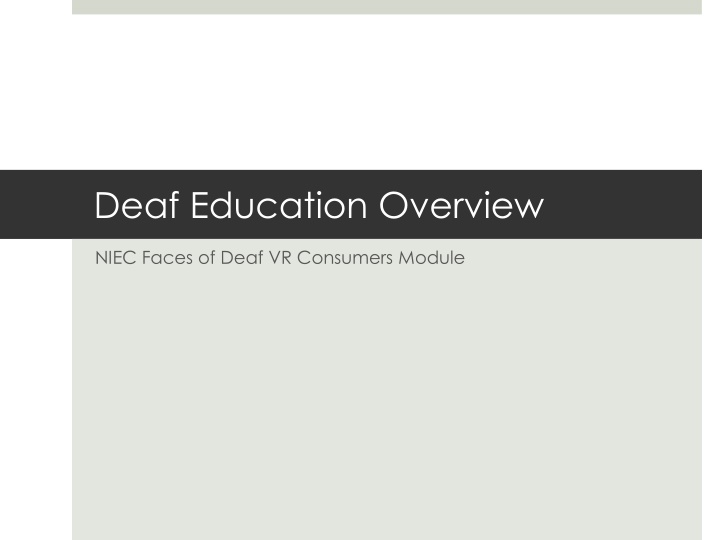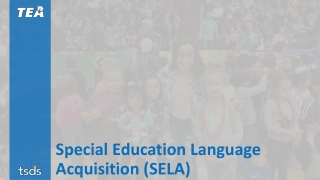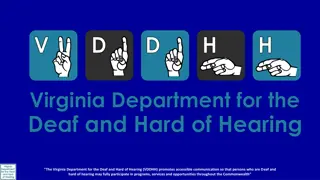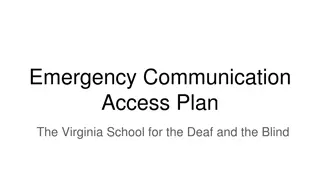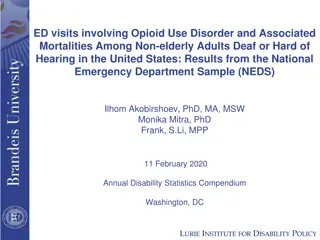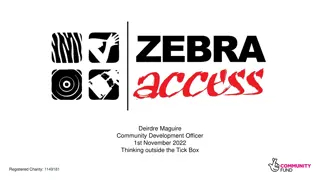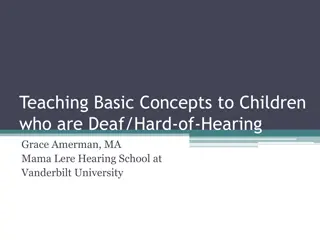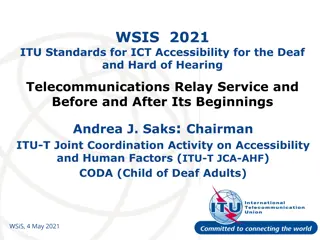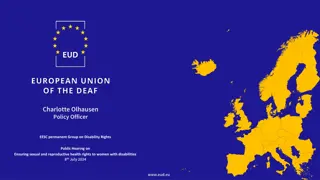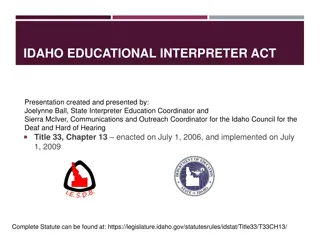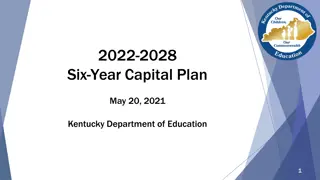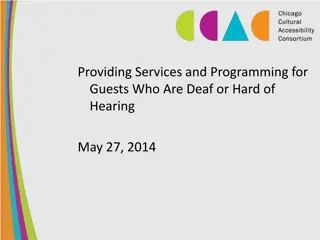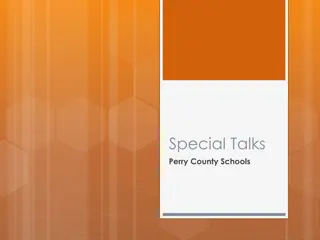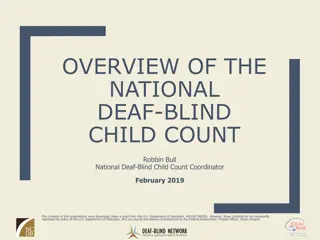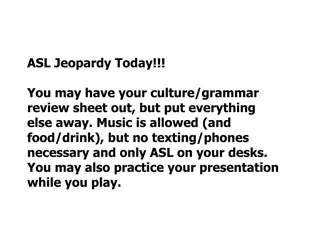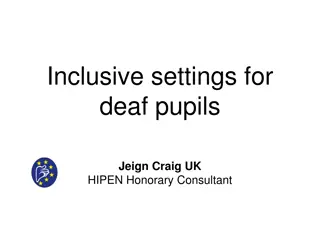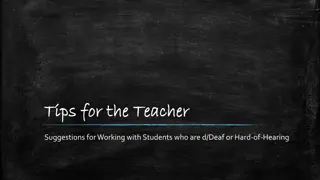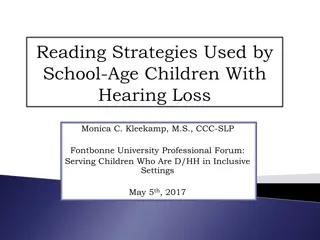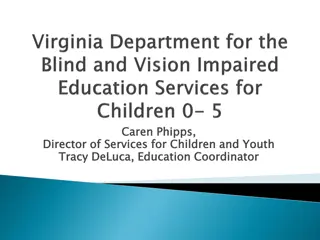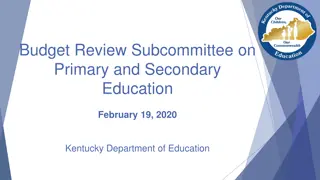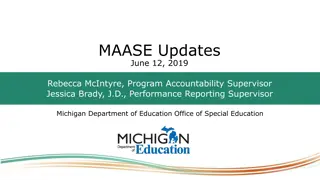Deaf Education Overview
This overview delves into the roots, legislation, communication approaches, educational methods, and environments in Deaf education. It also touches on teacher qualifications, interpreter credentials, and international settings, providing a comprehensive look at this specialized field.
Download Presentation

Please find below an Image/Link to download the presentation.
The content on the website is provided AS IS for your information and personal use only. It may not be sold, licensed, or shared on other websites without obtaining consent from the author.If you encounter any issues during the download, it is possible that the publisher has removed the file from their server.
You are allowed to download the files provided on this website for personal or commercial use, subject to the condition that they are used lawfully. All files are the property of their respective owners.
The content on the website is provided AS IS for your information and personal use only. It may not be sold, licensed, or shared on other websites without obtaining consent from the author.
E N D
Presentation Transcript
Deaf Education Overview NIEC Faces of Deaf VR Consumers Module
Deaf Education Overview Historic Roots of Deaf Education in US American School for the Deaf established 1817 Gallaudet (College) University established 1864 Milan Conference 1880
Deaf Education Overview Individuals with Disabilities Education Act (IDEA) Initially passed in mid-1970s Free & Appropriate Education Least Restrictive Environment Interpreters as a related service
Deaf Education Overview Communication Approaches in Deaf Education: Oral Method Cued Speech Manual Codes for English ASL
Deaf Education Overview Educational Approaches in Deaf Ed: Bilingual-Bicultural Approach Total Communication Aural/Oral
Deaf Education Overview Deaf Education Environments: Residential Schools Day Schools Mainstream/Inclusion Programs Self-Contained Classrooms
Deaf Education Overview Teacher Qualifications Vast majority of deaf educators are hearing Few are Deaf or native users of ASL Teaching licensure requirements rarely, if ever, test for sign language proficiency
Deaf Education Overview Interpreter Credentials: No national standard for interpreter proficiency Many interpreters remain unqualified today The Educational Interpreter Proficiency Assessment (EIPA) was designed to measure interpreting skills in k-12 settings Can test for different populations (elementary/HS) Can test for use of ASL and MCE http://www.classroominterpreting.org/About/index.asp
Deaf Education Overview Deaf Education in International Settings: Most developed countries offer the same array of communication and educational approaches as the US. Developing countries may have fewer options limiting educational access for Deaf individuals.
Deaf Education Overview Resources: Johnson, L.J. (2004). NASDSE fact sheet on educational interpreting (http://www.unco.edu/doit/resources/educational_inter preting.html). Zapien, C. (1998). Options in Deaf Education: History, methodologies, and strategies for surviving the system (http://www.listen-up.org/edu/options1.htm).
